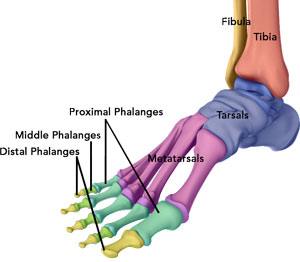
Turf Toe: Hyperextension injury of the big toe - common in athletes.Hammer, Mallet & Claw Toe: Deformities at the toe joints that put the toes out of alignment.Stress Fractures: small breaks in the bone usually from repetitive overloading in sports.There is the navicular, cuboid and three cuneiform bones in the midfoot.įive metatarsals connect the midfoot to the toes and fourteen phalanges make upĬommon problems that arise in the foot bones include: They are arranged in a pyramid shape to be the shock absorbers of the feet. The Midfoot: The five bones of the midfoot are what make up our foot arches.Underneath this is the heel bone, aka the calcaneus. This is where the ends of the shin bones, the tibia and fibula, meet the talus. The Hindfoot: the hindfoot comprises of the ankle joint, found at the bottom of the leg.

When thinking about foot and ankle anatomy, we usually divide the foot bones into three categories: the hindfoot, midfoot and forefoot. Let's have a look at each of these different elements of foot and ankle anatomy, how they fit together and what can go wrong.

Foot and ankle anatomy consists of 33 bones, 26 joints and over a hundred muscles, ligaments and tendons.


 0 kommentar(er)
0 kommentar(er)
